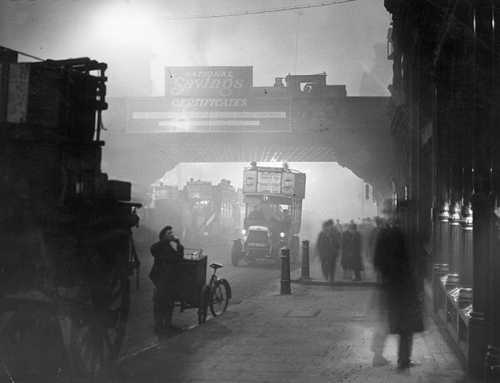Beautiful and breathtaking: see the fog roll in

What is it about fog draws us into our memories and lights up our imaginations? In Brisbane, where Starts at 60’s HQ is located, we’ve been enjoying a particularly moody fog season. Crossing the Ted Smout Bridge yesterday, my usual view of the city was obliterated by the grey cloud that rested on the flood plane, both heavy and light at the same time.
Another spectacular morning in #Brisbane @TheTodayShow #bnefog #chopperview pic.twitter.com/7uAnVNaz5r
— Penny Dahl (@Pennycopter) June 24, 2015
I remember, as a child, being terrified of the swirling grey mist that settled on Lake George outside of Canberra, forcing traffic to slow to a crawl and my father to curse the two feet of road in front of him. When Dad opened the window and stuck his head out in an effort to improve visibility, the fog’s cold tendrils reached in and wrapped around my sisters’ and my necks.
Fog has been an impartial player in many world events. It was there when the allies stormed the beaches of Normandy – both friend or foe, and cover or confusion depending on where you were shooting from.
In 1776, at the battle of Long Island, General George Washington and his troops used a thick fog to their advantage and were able to escape capture by the British Army.
Of course, the most famous fog of all time was the Great Smog of London, which lasted five days and is estimated to have killed 12,000 people in 1952.
On a windless, unusually cold day in December, a deadly combination of fog and smoke from coal fires created a “pea-souper” so thick that conductors had to walk in front of buses, drivers abandoned their cars and parents kept children home from school for fear of losing them in the gloom.
Policeman using flames at Marble Arch, London to direct traffic during the 'Great Smog' of 1952 pic.twitter.com/mEuhDJgplz ☼
— EMBASSY INTERIORS (@EMBASSYInterior) June 25, 2015
Thousands of tonnes of coal soot were pumped into the air during those cold, windless days and were trapped by the lid of fog. Scores of infants, older people and those suffering respiratory illnesses passed away, with many more suffering the same fate in the weeks and months to come.
For all that it took away, the Great Smog of London gave the city the Clean Air Act of 1956 and moved the city away from coal fires to gas and electricity.
A similar story is playing out in China at the moment as it grapples with the combination of winter fogs and noxious fumes from coal-fired power plants, factories and millions of cars.
The capital, Beijing is regularly smothered, forcing residents to wear protective masks and high-visibility clothing, and affecting productivity as roads and airports grind to a halt.
Under the Dome, a documentary by a Chinese journalist and mother that criticised the government for contributing to the smog crisis, was viewed 200 million times online before disappearing, with reports it was banned.
However some believe the economic impacts of the smog are a driving force behind China’s recent commitment to greening up its act.
Even when pollution is not an issue, fog still has the ability to disrupt our lives, especially for those of us who live in urban environments. And at least one SaS team member has received a ball in the face from playing sport in the mist.
That said, fog can also bring us closer together and inspire us with it’s quiet magic.
“The fog comes on little cat feet. It sits looking over harbour and city on silent haunches and then moves on,” wrote American poet Carl Sandburg in 1916.
It's a beautiful day in #Brisbane, you just don't know it yet. #bnefog pic.twitter.com/jTVGQHdokX
— Henry Tuttiett (@henry_tuttiett) June 17, 2015
In today’s slightly less poetic world, the hashtag #bnefog was trending yesterday as people uploaded their images of the Brisbane fog. Meanwhile, a photographer in Adelaide caught this stunning image of fog pouring into the Murray River:
Murray River fog creates amazing photograph over Blanchetown, South Australia http://t.co/NTiUGtuUUS
— The Advertiser (@theTiser) June 24, 2015
“I’ve seen the river on many a foggy morning, but drifting over Blanchetown in a hot-air balloon and witnessing this is something I will remember for a very long time,” said Mark Moxham.
What feelings does fog conjure up for you? Is it spooky, romantic, cosy or exciting? Share your memories of fog below!









 Proudly Australian owned and operated
Proudly Australian owned and operated